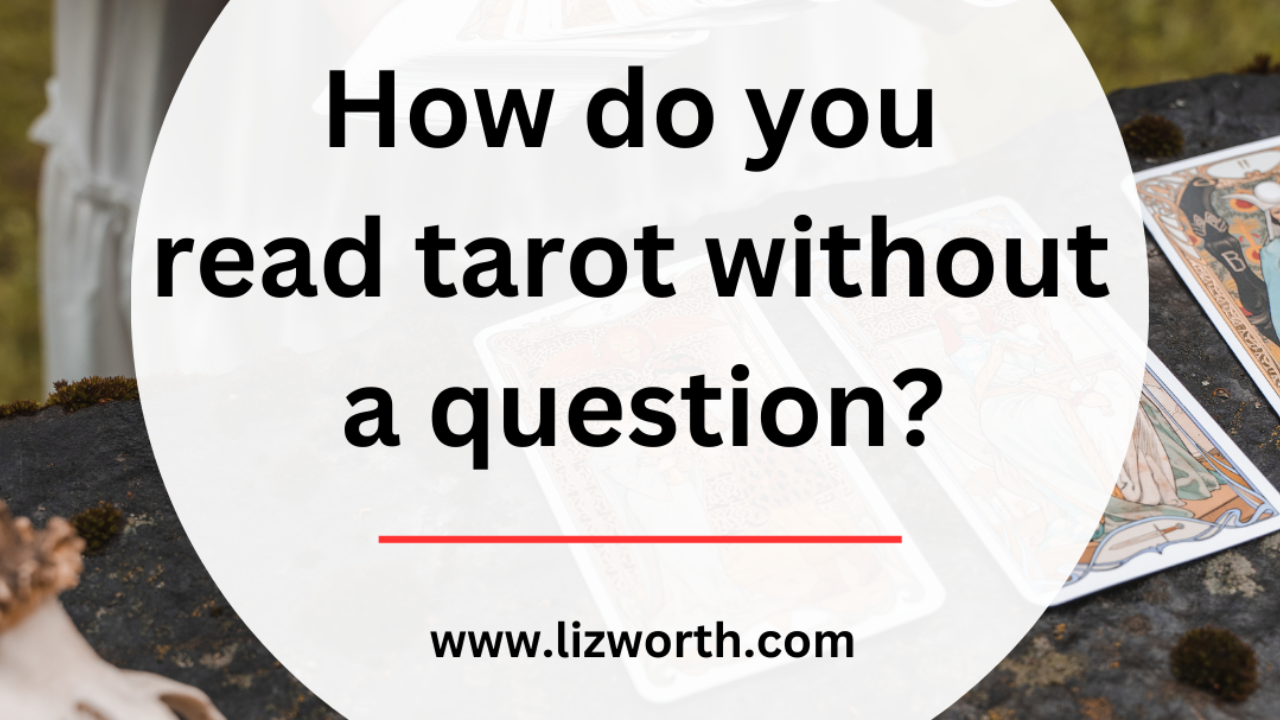How do you read tarot without a question?

In my previous post, I talked about working with questions in tarot, and the importance of understanding your intention and focus when posing questions.
But what do you when you are reading tarot for someone who doesn’t have a question?
Or, what if you just want to perform a reading for yourself, but you’re not sure what you want to know? I think every tarot reader can relate to feeling called to sit with your cards without knowing why.
The idea of pulling a few cards “just to see what comes up” is a beautiful one – until it comes time to interpret those cards. That’s when things can start to feel murky.
You might have already heard me say that tarot cards can mean anything, everything, and nothing at all.
Questions help to give shape and context to what we see in those cards. A certain symbol might have a lot of weight in a love reading but might not even be considered in a career context.
Questions essentially give your cards a job to do once they’re on the table. Without a question, you can end up wondering what to focus on in your reading, because you’re not sure what those cards pertain to: “Is it a warning? A good omen? A message for my roommate?”
It’s also easy for your thoughts to go wild when a reading has no clear aim or direction – especially if you’re reading for yourself.
And if you’re reading for a stranger, that can be just as challenging. It’s common for querents to sit down and say, “I don’t have a question – just tell me whatever comes up.”
I find that sometimes, that can be true. Other times, it tends to be more a reflection of a querent’s assumptions about how a tarot reading works.
Many people think that all that goes into a reading is a routine flip of the cards and away we go.
But it’s not always easy to place an interpretation within a reading that way. Sometimes, you might feel like you’re taking a stab in the dark at a thread. You can talk about what you’re seeing, but you might not know how or if it pertains to your querent at all. The reading can start to feel more like a guessing game than a productive, insightful session.
So what do you do in those instances?
As the tarot reader, it’s always up to you on how you want to lead your work. I know of some readers who insist that querents have questions – they won’t read without one.
But if you are doing a lot of events like markets and fairs, or taking walk-in business at a local shop or bar, you’re likely going to encounter a higher volume of querents who are dropping by for a reading out of curiosity or impulse. Which means your querents might not have thought much about what they want to get out of the experience, which means you’re more likely to be working without a question.
This is where spreads come in. Spreads already have questions and topics imposed within them. They push the reading towards specific information.
You don’t need to know fifty different spreads by memory to be able to offer general readings. Committing to just a few can be enough for you to work with.
When a querent comes to you without a question, you can say, “No problem. I can do a reading for you that looks at little at X, a little at Y, and a little at Z. Does that sound interesting to you?” And take it from there.
Sometimes, you might find that once you list out a few specific areas of life to explore with a querent, something will click with them and they might realize they actually have a question, or that they’re hoping to learn more about a topic you hadn’t mentioned.
Being able to hold space for questions and open readings is something that I encourage. Like I said earlier, we all have to decide as readers how we’re going to work, but in my experience I have found that being flexible with querents goes a long way.
Working with different types of questions – and a lack thereof – is something that I cover in Taking Tarot to the Next Level, an intermediate tarot course for readers who want to read for others. Here, I teach my go-to tarot spreads for open readings, as well as lessons on predictions, yes or no questions, and more.
This course encompasses a range of tools and techniques to help you become a well-rounded tarot reader who can confidently move between specific questions and open-ended readings.
Learn more here.
Until next time,
Liz
